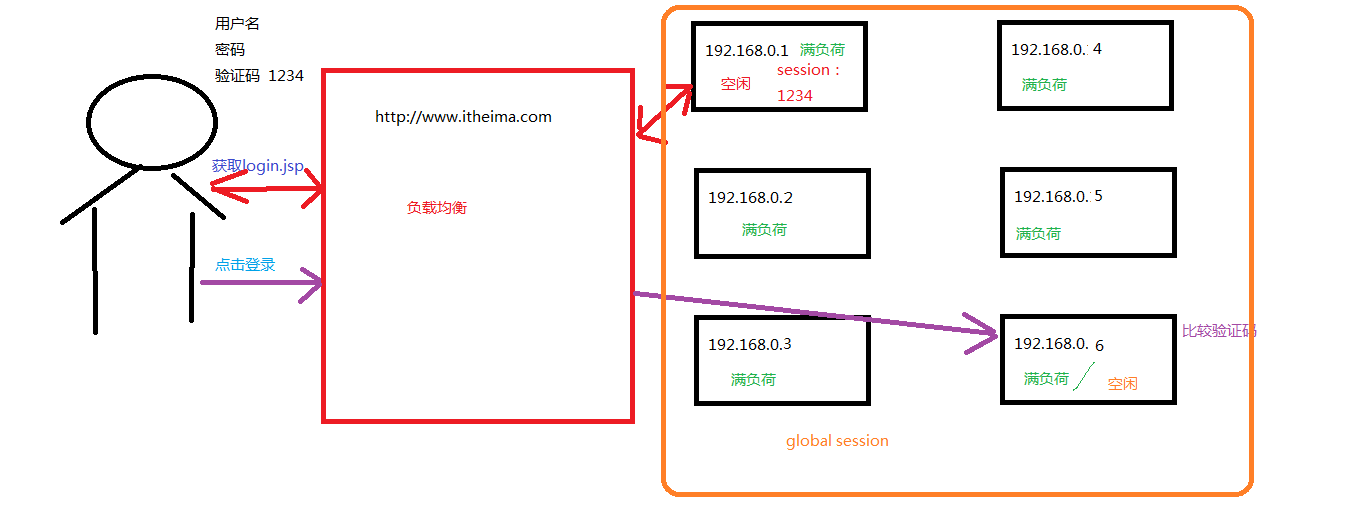spring共四天
第一天:spring框架的概述以及spring中基于XML的IOC配置
第二天:spring中基于注解的IOC和ioc的案例
第三天:spring中的aop和基于XML以及注解的AOP配置
第四天:spring中的JdbcTemlate以及Spring事务控制
-----------------------------------------------------
一、内容大纲
1、spring的概述
spring是什么
spring的两大核心
spring的发展历程和优势
spring体系结构
2、程序的耦合及解耦
曾经案例中问题
工厂模式解耦
3、IOC概念和spring中的IOC
spring中基于XML的IOC环境搭建
4、依赖注入(Dependency Injection)
二、spring概述

1.jdbc小案例
package com.iteima.jdbc; import java.sql.Connection; import java.sql.DriverManager; import java.sql.PreparedStatement; import java.sql.ResultSet; /** * 程序的耦合 * 耦合:程序间的依赖关系 * 包括: * 类之间的依赖 * 方法间的依赖 * 解耦: * 降低程序间的依赖关系 * 实际开发中: * 应该做到:编译期不依赖,运行时才依赖。 * 解耦的思路: * 第一步:使用反射来创建对象,而避免使用new关键字。 * 第二步:通过读取配置文件来获取要创建的对象全限定类名 * */ public class JdbcDemo1 { public static void main(String[] args) throws Exception{ //1.注册驱动 // DriverManager.registerDriver(new com.mysql.jdbc.Driver()); Class.forName("com.mysql.jdbc.Driver"); //2.获取连接 Connection conn = DriverManager.getConnection("jdbc:mysql://localhost:3306/eesy","root","1234"); //3.获取操作数据库的预处理对象 PreparedStatement pstm = conn.prepareStatement("select * from account"); //4.执行SQL,得到结果集 ResultSet rs = pstm.executeQuery(); //5.遍历结果集 while(rs.next()){ System.out.println(rs.getString("name")); } //6.释放资源 rs.close(); pstm.close(); conn.close(); } }
通过此案例,可以得出我们以前写的程序独立性很差,以及解决耦合性过高的思路
2.工厂模式解耦
bean.properties
accountService=com.itheima.service.impl.AccountServiceImpl
accountDao=com.itheima.dao.impl.AccountDaoImpl
beanFactory
扫描二维码关注公众号,回复:
8669210 查看本文章


package com.itheima.factory; import java.io.InputStream; import java.util.Enumeration; import java.util.HashMap; import java.util.Map; import java.util.Properties; /** * 一个创建Bean对象的工厂 * * Bean:在计算机英语中,有可重用组件的含义。 * JavaBean:用java语言编写的可重用组件。 * javabean > 实体类 * * 它就是创建我们的service和dao对象的。 * * 第一个:需要一个配置文件来配置我们的service和dao * 配置的内容:唯一标识=全限定类名(key=value) * 第二个:通过读取配置文件中配置的内容,反射创建对象 * * 我的配置文件可以是xml也可以是properties */ public class BeanFactory { //定义一个Properties对象 private static Properties props; //定义一个Map,用于存放我们要创建的对象。我们把它称之为容器 private static Map<String,Object> beans; //使用静态代码块为Properties对象赋值 static { try { //实例化对象 props = new Properties(); //获取properties文件的流对象 InputStream in = BeanFactory.class.getClassLoader().getResourceAsStream("bean.properties"); props.load(in); //实例化容器 beans = new HashMap<String,Object>(); //取出配置文件中所有的Key Enumeration keys = props.keys(); //遍历枚举 while (keys.hasMoreElements()){ //取出每个Key String key = keys.nextElement().toString(); //根据key获取value String beanPath = props.getProperty(key); //反射创建对象 Object value = Class.forName(beanPath).newInstance(); //把key和value存入容器中 beans.put(key,value); } }catch(Exception e){ throw new ExceptionInInitializerError("初始化properties失败!"); } } /** * 根据bean的名称获取对象(获取的是单例的对象)
单例对象对于本例更加适合,执行效率更高
* @param beanName * @return */ public static Object getBean(String beanName){ return beans.get(beanName); } /** * 根据Bean的名称获取bean对象 * @param beanName * @return public static Object getBean(String beanName){ Object bean = null; try { String beanPath = props.getProperty(beanName); // System.out.println(beanPath); bean = Class.forName(beanPath).newInstance();//每次都会调用默认构造函数创建对象,获取的是多例的对象 }catch (Exception e){ e.printStackTrace(); } return bean; }*/ }
package com.itheima.ui; import com.itheima.factory.BeanFactory; import com.itheima.service.IAccountService; /** * 模拟一个表现层,用于调用业务层 */ public class Client { public static void main(String[] args) { //IAccountService as = new AccountServiceImpl(); for(int i=0;i<5;i++) { IAccountService as = (IAccountService) BeanFactory.getBean("accountService"); System.out.println(as); as.saveAccount(); } } }
/** * 账户的业务层实现类 */ public class AccountServiceImpl implements IAccountService { // private IAccountDao accountDao = new AccountDaoImpl(); private IAccountDao accountDao = (IAccountDao)BeanFactory.getBean("accountDao");
/** * 获取spring的Ioc核心容器,并根据id获取对象 * * ApplicationContext的三个常用实现类: * ClassPathXmlApplicationContext:它可以加载类路径下的配置文件,要求配置文件必须在类路径下。不在的话,加载不了。(更常用) * FileSystemXmlApplicationContext:它可以加载磁盘任意路径下的配置文件(必须有访问权限) * * AnnotationConfigApplicationContext:它是用于读取注解创建容器的,是明天的内容。 * * 核心容器的两个接口引发出的问题: * ApplicationContext: 单例对象适用 采用此接口 * 它在构建核心容器时,创建对象采取的策略是采用立即加载的方式。也就是说,只要一读取完配置文件马上就创建配置文件中配置的对象。 * * BeanFactory: 多例对象使用 * 它在构建核心容器时,创建对象采取的策略是采用延迟加载的方式。也就是说,什么时候根据id获取对象了,什么时候才真正的创建对象。 * @param args */
一.入门案例
1.引入坐标位置、导入配置文件
<?xml version="1.0" encoding="UTF-8"?>
<project xmlns="http://maven.apache.org/POM/4.0.0"
xmlns:xsi="http://www.w3.org/2001/XMLSchema-instance"
xsi:schemaLocation="http://maven.apache.org/POM/4.0.0 http://maven.apache.org/xsd/maven-4.0.0.xsd">
<modelVersion>4.0.0</modelVersion>
<groupId>com.itheima</groupId>
<artifactId>day01_eesy_03spring</artifactId>
<version>1.0-SNAPSHOT</version>
<packaging>jar</packaging>
<dependencies>
<dependency>
<groupId>org.springframework</groupId>
<artifactId>spring-context</artifactId>
<version>5.0.2.RELEASE</version>
</dependency>
</dependencies>
</project>
2.导入约束
<?xml version="1.0" encoding="UTF-8"?>
<beans xmlns="http://www.springframework.org/schema/beans"
xmlns:xsi="http://www.w3.org/2001/XMLSchema-instance"
xsi:schemaLocation="http://www.springframework.org/schema/beans
http://www.springframework.org/schema/beans/spring-beans.xsd">
3.把对象的创建交给spring来管理
<?xml version="1.0" encoding="UTF-8"?>
<beans xmlns="http://www.springframework.org/schema/beans"
xmlns:xsi="http://www.w3.org/2001/XMLSchema-instance"
xsi:schemaLocation="http://www.springframework.org/schema/beans
http://www.springframework.org/schema/beans/spring-beans.xsd">
<!--把对象的创建交给spring来管理-->
<bean id="accountService" class="com.itheima.service.impl.AccountServiceImpl"></bean>
<bean id="accountDao" class="com.itheima.dao.impl.AccountDaoImpl"></bean>
</beans>
4.创建对象
public static void main(String[] args) {
//1.获取核心容器对象
ApplicationContext ac = new ClassPathXmlApplicationContext("bean.xml");
// ApplicationContext ac = new FileSystemXmlApplicationContext("C:\\Users\\zhy\\Desktop\\bean.xml");
//2.根据id获取Bean对象
IAccountService as = (IAccountService)ac.getBean("accountService");
IAccountDao adao = ac.getBean("accountDao",IAccountDao.class);
System.out.println(as);
System.out.println(adao);
as.saveAccount();
解析配置文件、创建对象、存入Map都让spring做了
二、spring对bean的管理细节
1.创建bean的三种方式
<!--创建Bean的三种方式 -->
<!-- 第一种方式:使用默认构造函数创建。
在spring的配置文件中使用bean标签,配以id和class属性之后,且没有其他属性和标签时。
采用的就是默认构造函数创建bean对象,此时如果类中没有默认构造函数,则对象无法创建。
<bean id="accountService" class="com.itheima.service.impl.AccountServiceImpl"></bean>
-->
<!-- 第二种方式: 使用普通工厂中的方法创建对象(使用某个类中的方法创建对象,并存入spring容器)
<bean id="instanceFactory" class="com.itheima.factory.InstanceFactory"></bean>
<bean id="accountService" factory-bean="instanceFactory" factory-method="getAccountService"></bean>
-->
<!-- 第三种方式:使用工厂中的静态方法创建对象(使用某个类中的静态方法创建对象,并存入spring容器)
<bean id="accountService" class="com.itheima.factory.StaticFactory" factory-method="getAccountService"></bean>
-->
2.bean对象的作用范围
bean的作用范围调整
bean标签的scope属性:
作用:用于指定bean的作用范围
取值: 常用的就是单例的和多例的
singleton:单例的(默认值)
prototype:多例的
request:作用于web应用的请求范围
session:作用于web应用的会话范围
global-session:作用于集群环境的会话范围(全局会话范围),当不是集群环境时,它就是session
<bean id="accountService" class="com.itheima.service.impl.AccountServiceImpl" scope="prototype"></bean>

3.bean对象的生命周期
<!-- bean对象的生命周期
单例对象
出生:当容器创建时对象出生
活着:只要容器还在,对象一直活着
死亡:容器销毁,对象消亡
总结:单例对象的生命周期和容器相同
多例对象
出生:当我们使用对象时spring框架为我们创建
活着:对象只要是在使用过程中就一直活着。
死亡:当对象长时间不用,且没有别的对象引用时,由Java的垃圾回收器回收
-->
<bean id="accountService" class="com.itheima.service.impl.AccountServiceImpl"
scope="prototype" init-method="init" destroy-method="destroy"></bean>
三、spring的依赖注入
依赖注入:
Dependency Injection
IOC的作用:
降低程序间的耦合(依赖关系)
依赖关系的管理:
以后都交给spring来维护
在当前类需要用到其他类的对象,由spring为我们提供,我们只需要在配置文件中说明
依赖关系的维护:
就称之为依赖注入。
依赖注入:
能注入的数据:有三类
基本类型和String
其他bean类型(在配置文件中或者注解配置过的bean)
复杂类型/集合类型
注入的方式:有三种
第一种:使用构造函数提供
第二种:使用set方法提供
第三种:使用注解提供(明天的内容)
1.构造函数注入
使用的标签:constructor-arg
标签出现的位置:bean标签的内部
标签中的属性
type:用于指定要注入的数据的数据类型,该数据类型也是构造函数中某个或某些参数的类型
index:用于指定要注入的数据给构造函数中指定索引位置的参数赋值。索引的位置是从0开始
name:用于指定给构造函数中指定名称的参数赋值
===以上三个(name常用)用于指定给构造函数中哪个参数赋值===
value:用于提供基本类型和String类型的数据
ref:用于指定其他的bean类型数据。它指的就是在spring的Ioc核心容器中出现过的bean对象
优势:
在获取bean对象时,注入数据是必须的操作,否则对象无法创建成功。
弊端:
改变了bean对象的实例化方式,使我们在创建对象时,如果用不到这些数据,也必须提供。
bean.xml
<bean id="accountService" class="com.itheima.service.impl.AccountServiceImpl">
<constructor-arg name="name" value="泰斯特"></constructor-arg>
<constructor-arg name="age" value="18"></constructor-arg>
<constructor-arg name="birthday" ref="now"></constructor-arg>
</bean>
<!-- 配置一个日期对象 -->
<bean id="now" class="java.util.Date"></bean>
accountServiceImpl
package com.itheima.service.impl;
import com.itheima.service.IAccountService;
import java.util.Date;
/**
* 账户的业务层实现类
*/
public class AccountServiceImpl implements IAccountService {
//如果是经常变化的数据,并不适用于注入的方式
private String name;
private Integer age;
private Date birthday;
public AccountServiceImpl(String name,Integer age,Date birthday){
this.name = name;
this.age = age;
this.birthday = birthday;
}
public void saveAccount(){
System.out.println("service中的saveAccount方法执行了。。。"+name+","+age+","+birthday);
}
}
2.Set方法注入
涉及的标签:property
出现的位置:bean标签的内部
标签的属性
name:用于指定注入时所调用的set方法名称
value:用于提供基本类型和String类型的数据
ref:用于指定其他的bean类型数据。它指的就是在spring的Ioc核心容器中出现过的bean对象
优势:
创建对象时没有明确的限制,可以直接使用默认构造函数
弊端:
如果有某个成员必须有值,则获取对象是有可能set方法没有执行。
bean.xml
<bean id="accountService2" class="com.itheima.service.impl.AccountServiceImpl2">
<property name="name" value="TEST" ></property>
<property name="age" value="21"></property>
<property name="birthday" ref="now"></property>
</bean>
accountServiceImpl2
package com.itheima.service.impl;
import com.itheima.service.IAccountService;
import java.util.Date;
/**
* 账户的业务层实现类
*/
public class AccountServiceImpl2 implements IAccountService {
//如果是经常变化的数据,并不适用于注入的方式
private String name;
private Integer age;
private Date birthday;
public void setName(String name) {
this.name = name;
}
public void setAge(Integer age) {
this.age = age;
}
public void setBirthday(Date birthday) {
this.birthday = birthday;
}
public void saveAccount(){
System.out.println("service中的saveAccount方法执行了。。。"+name+","+age+","+birthday);
}
}
3.复杂类型注入
package com.itheima.service.impl;
import com.itheima.service.IAccountService;
import java.util.Arrays;
import java.util.List;
import java.util.Properties;
import java.util.Set;
import java.util.Map;
/**
* 账户的业务层实现类
*/
public class AccountServiceImpl3 implements IAccountService {
private String[] myStrs;
private List<String> myList;
private Set<String> mySet;
private Map<String,String> myMap;
private Properties myProps;
public void setMyStrs(String[] myStrs) {
this.myStrs = myStrs;
}
public void setMyList(List<String> myList) {
this.myList = myList;
}
public void setMySet(Set<String> mySet) {
this.mySet = mySet;
}
public void setMyMap(Map<String, String> myMap) {
this.myMap = myMap;
}
public void setMyProps(Properties myProps) {
this.myProps = myProps;
}
public void saveAccount(){
System.out.println(Arrays.toString(myStrs));
System.out.println(myList);
System.out.println(mySet);
System.out.println(myMap);
System.out.println(myProps);
}
}
<?xml version="1.0" encoding="UTF-8"?>
<beans xmlns="http://www.springframework.org/schema/beans"
xmlns:xsi="http://www.w3.org/2001/XMLSchema-instance"
xsi:schemaLocation="http://www.springframework.org/schema/beans
http://www.springframework.org/schema/beans/spring-beans.xsd">
<!-- 复杂类型的注入/集合类型的注入
用于给List结构集合注入的标签:
list array set
用于个Map结构集合注入的标签:
map props
结构相同,标签可以互换
-->
<bean id="accountService3" class="com.itheima.service.impl.AccountServiceImpl3">
<property name="myStrs">
<set>
<value>AAA</value>
<value>BBB</value>
<value>CCC</value>
</set>
</property>
<property name="myList">
<array>
<value>AAA</value>
<value>BBB</value>
<value>CCC</value>
</array>
</property>
<property name="mySet">
<list>
<value>AAA</value>
<value>BBB</value>
<value>CCC</value>
</list>
</property>
<property name="myMap">
<props>
<prop key="testC">ccc</prop>
<prop key="testD">ddd</prop>
</props>
</property>
<property name="myProps">
<map>
<entry key="testA" value="aaa"></entry>
<entry key="testB">
<value>BBB</value>
</entry>
</map>
</property>
</bean>
</beans>